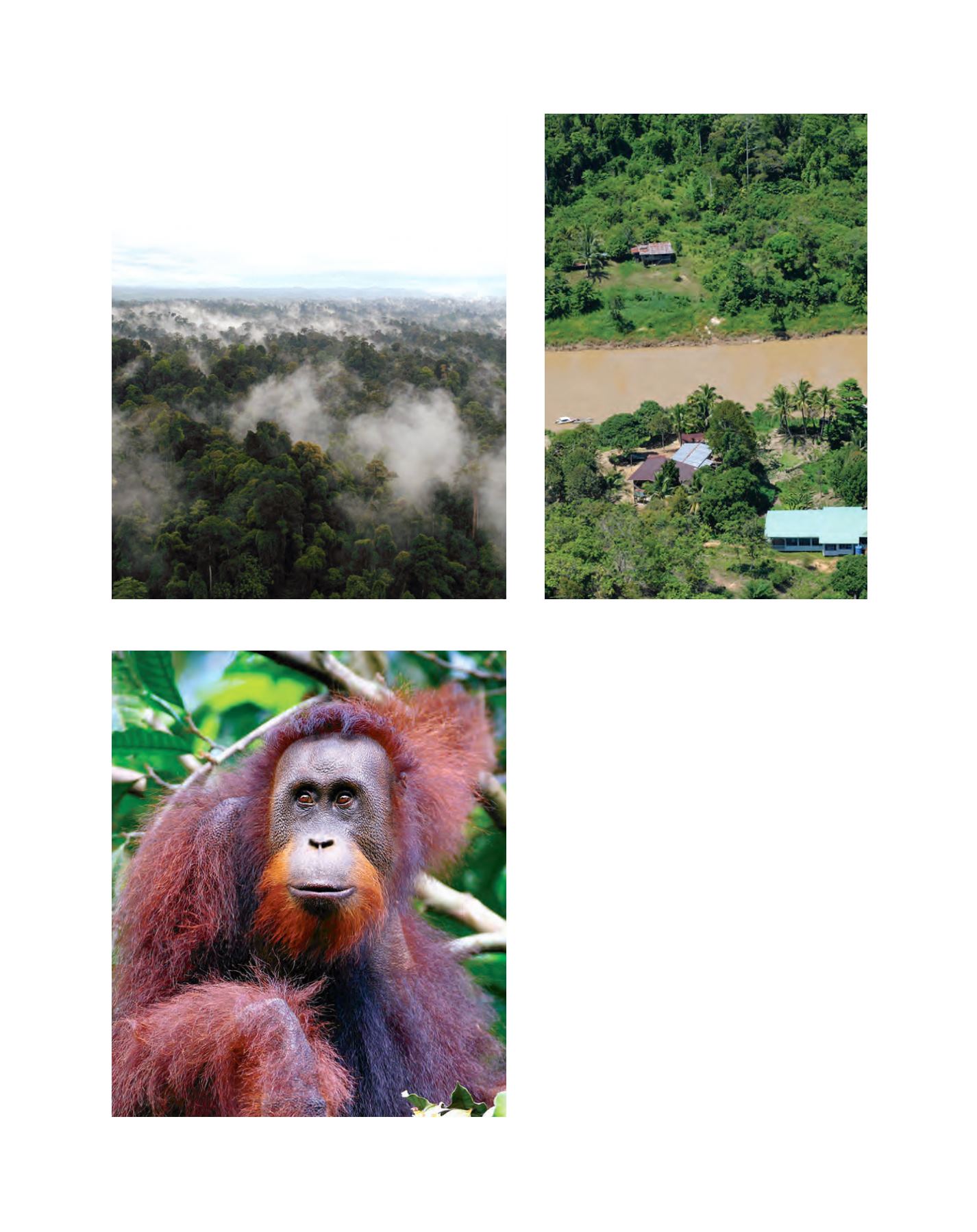

[
] 279
Aware that the needs of indigenous peoples are
crucial for the long-term well-being of Deramakot, the
Department has allocated 18 ha of the reserve for commu-
nity forestry activities. While there are no communities
that live within Deramakot, the Department has reached
out to those who live at its fringes. This is in line with its
foray in 1984 into a series of community forestry projects
to provide income and livelihood to indigenous peoples
living in and at the boundaries of forest reserves. SFM
principles require the active participation of indigenous
peoples and the Department continues to develop strate-
gies to accommodate the needs of an estimated 20,000
people who live in and close to forest reserves. The
Department’s experience of over two decades in commu-
nity and social forestry has led it to conclude that the
meaningful involvement of indigenous communities is
an effective part of the long-term solution to deforesta-
tion and land degradation. It has collected almost RM100
million from timber companies for its Community
Forestry Cess Fund and almost half of this has allowed
4,000 families to move into new homes, and to enjoy
gravity water feed systems and clinics. Recognition for
Sabah’s efforts is perhaps best chronicled by the United
Nations Development Programme book
Sustainable
Community Forest Management in Sabah
that outlines the
need for roads, healthcare and access to clean water as
among the requirements to ensure community projects
remain sustainable.
Deramakot Forest Reserve
Deramakot is a refuge for many mammal species such as orangutan
Desa Permai, a village located adjacent to Deramakot Forest Reserve
Image: Peter Lagan
Image: Andy Chock
Image: Peter Lagan
















